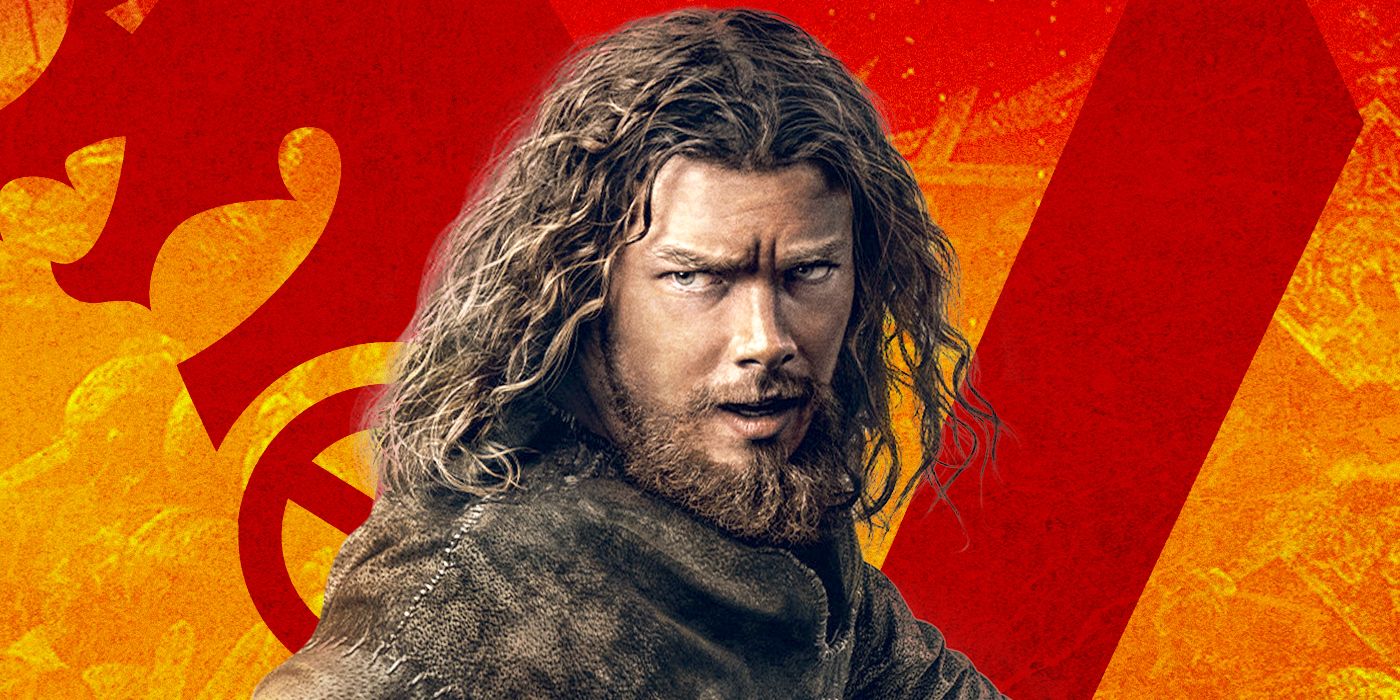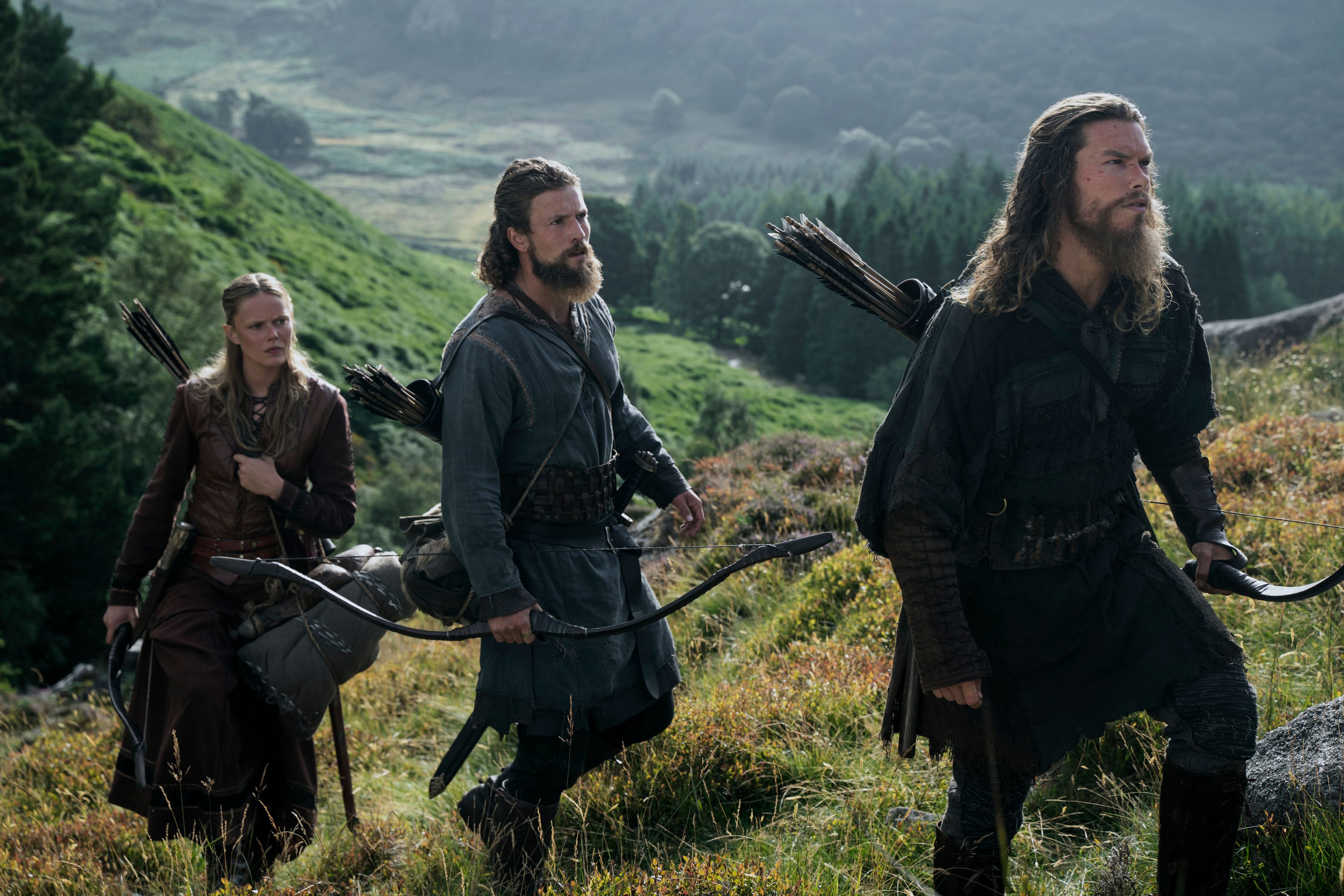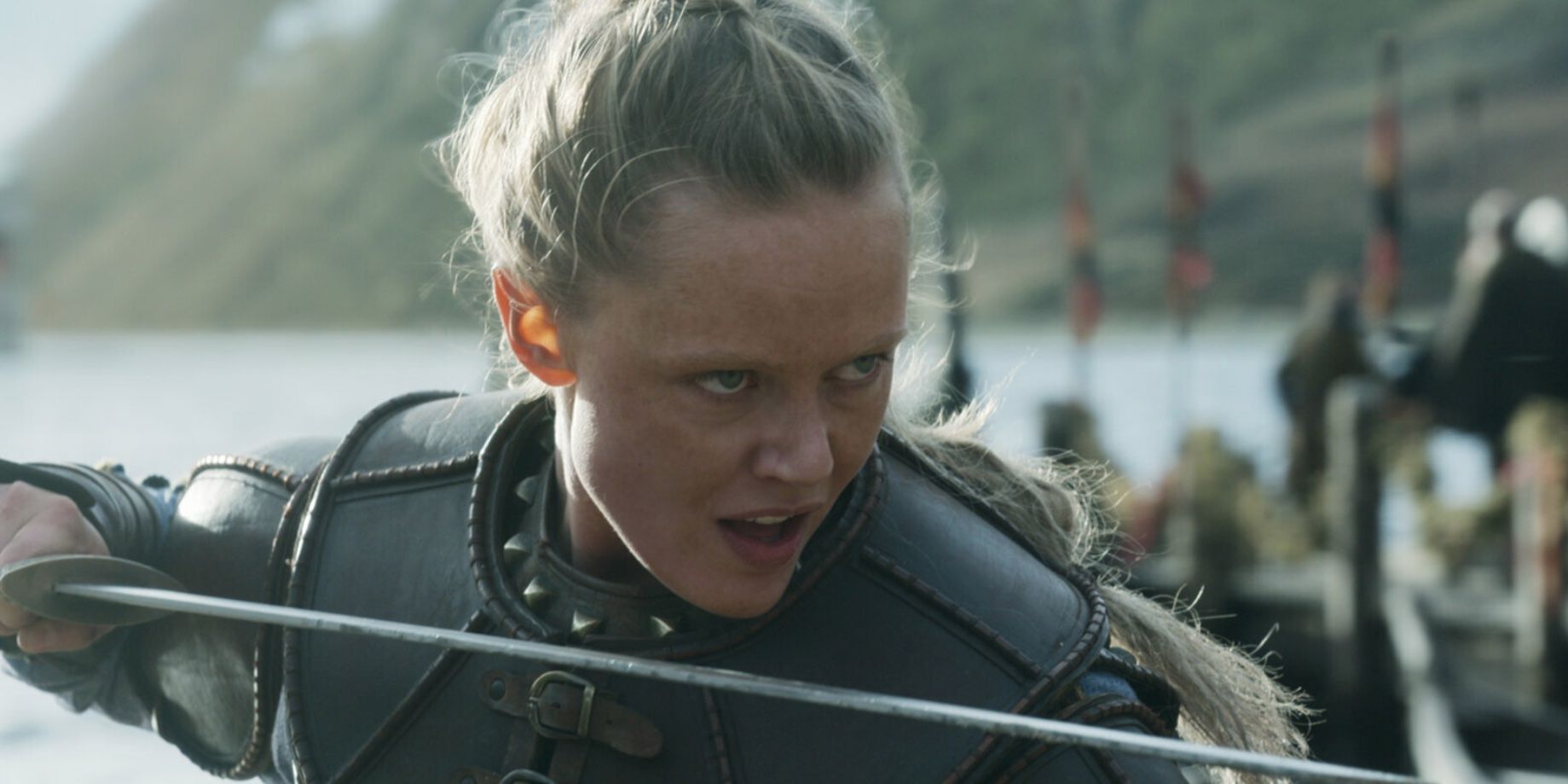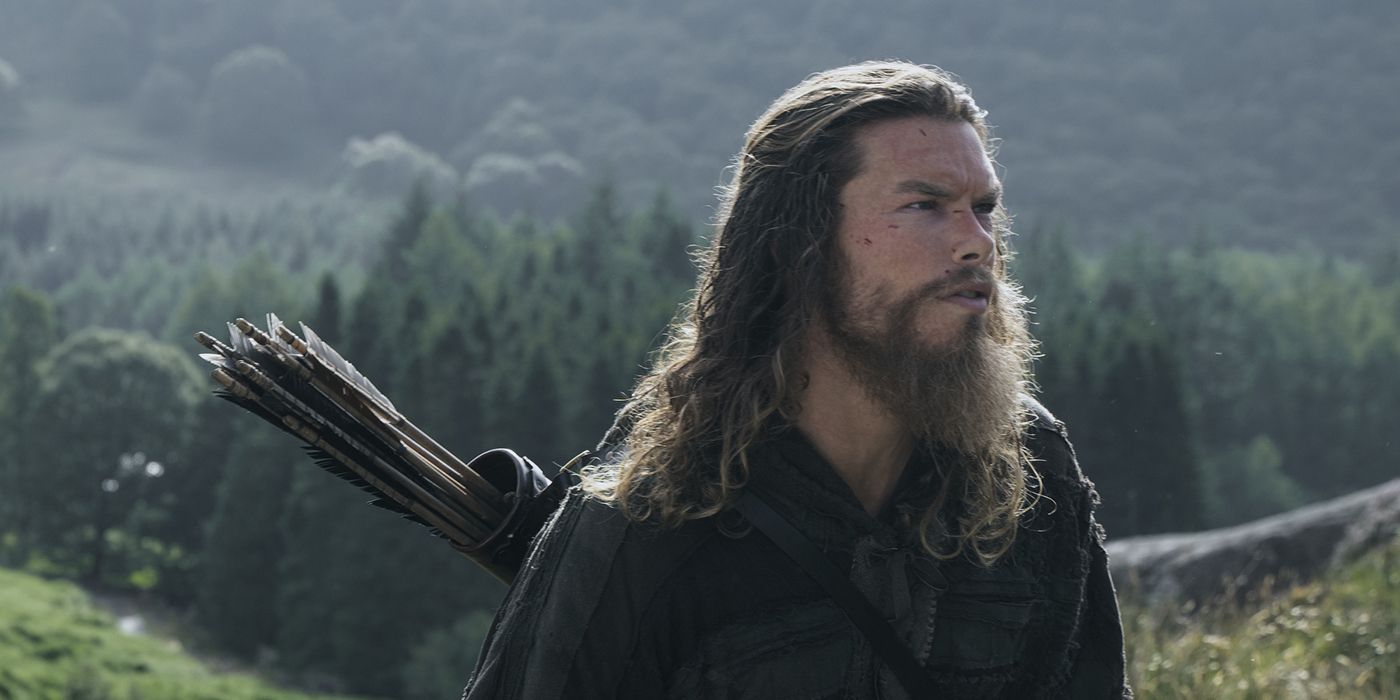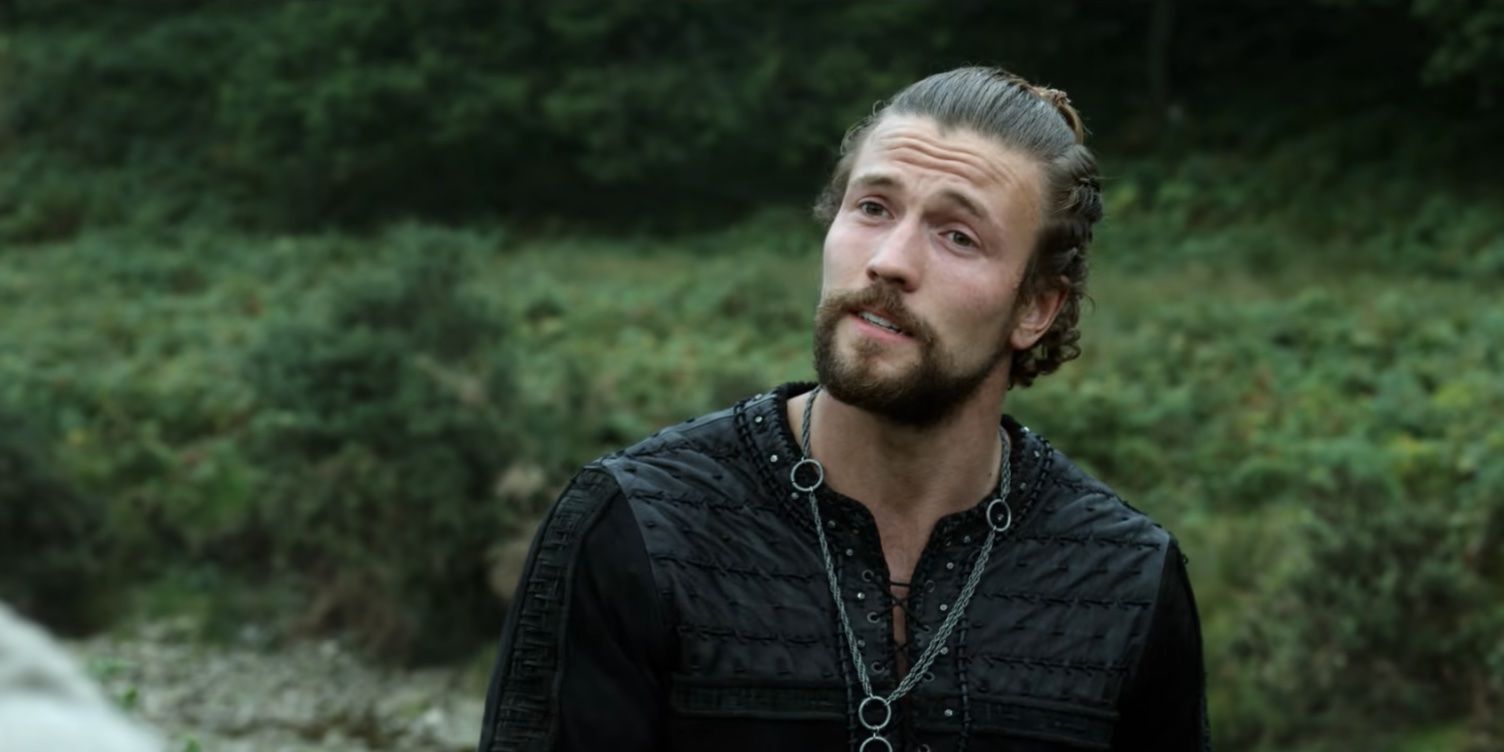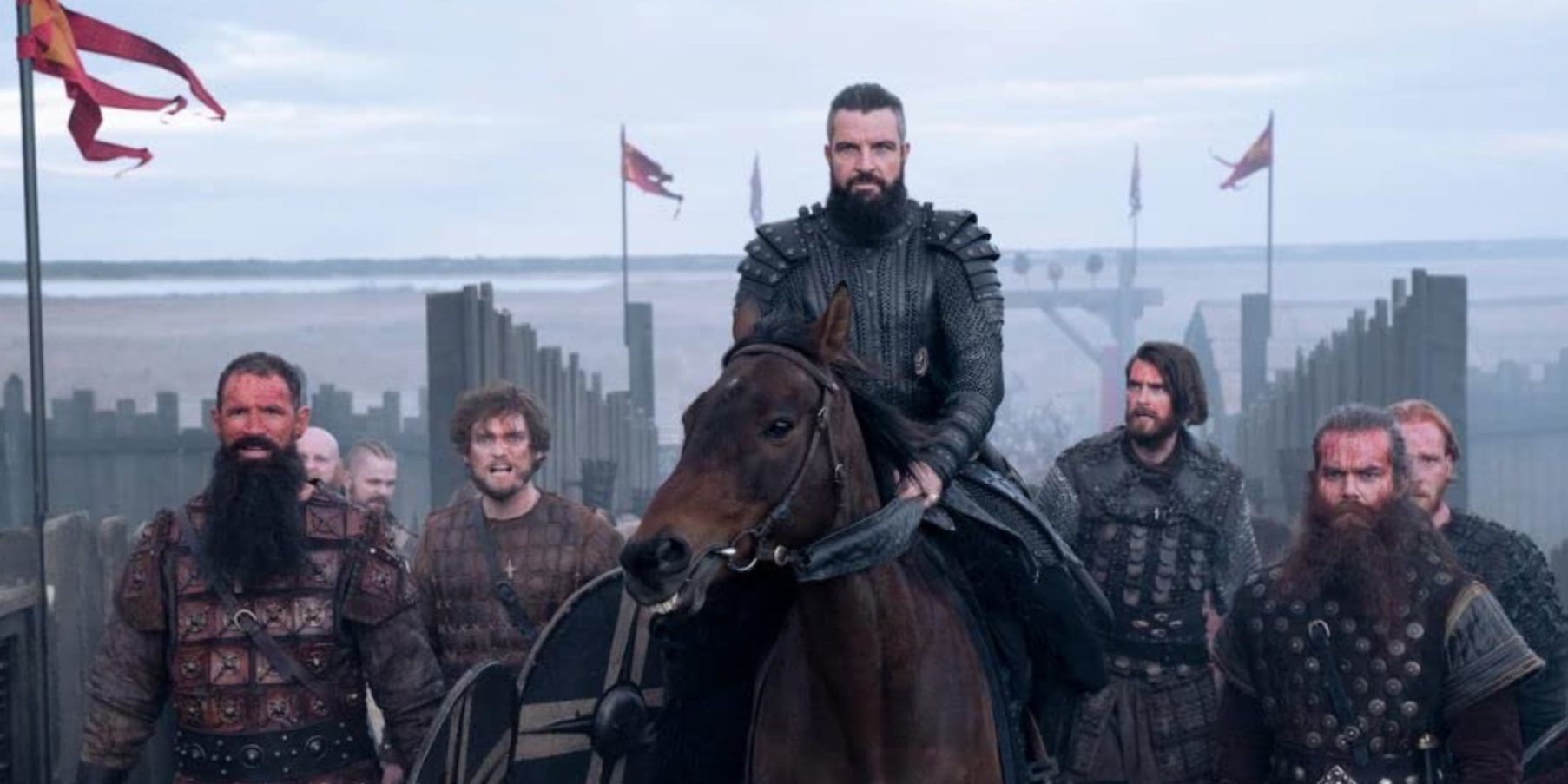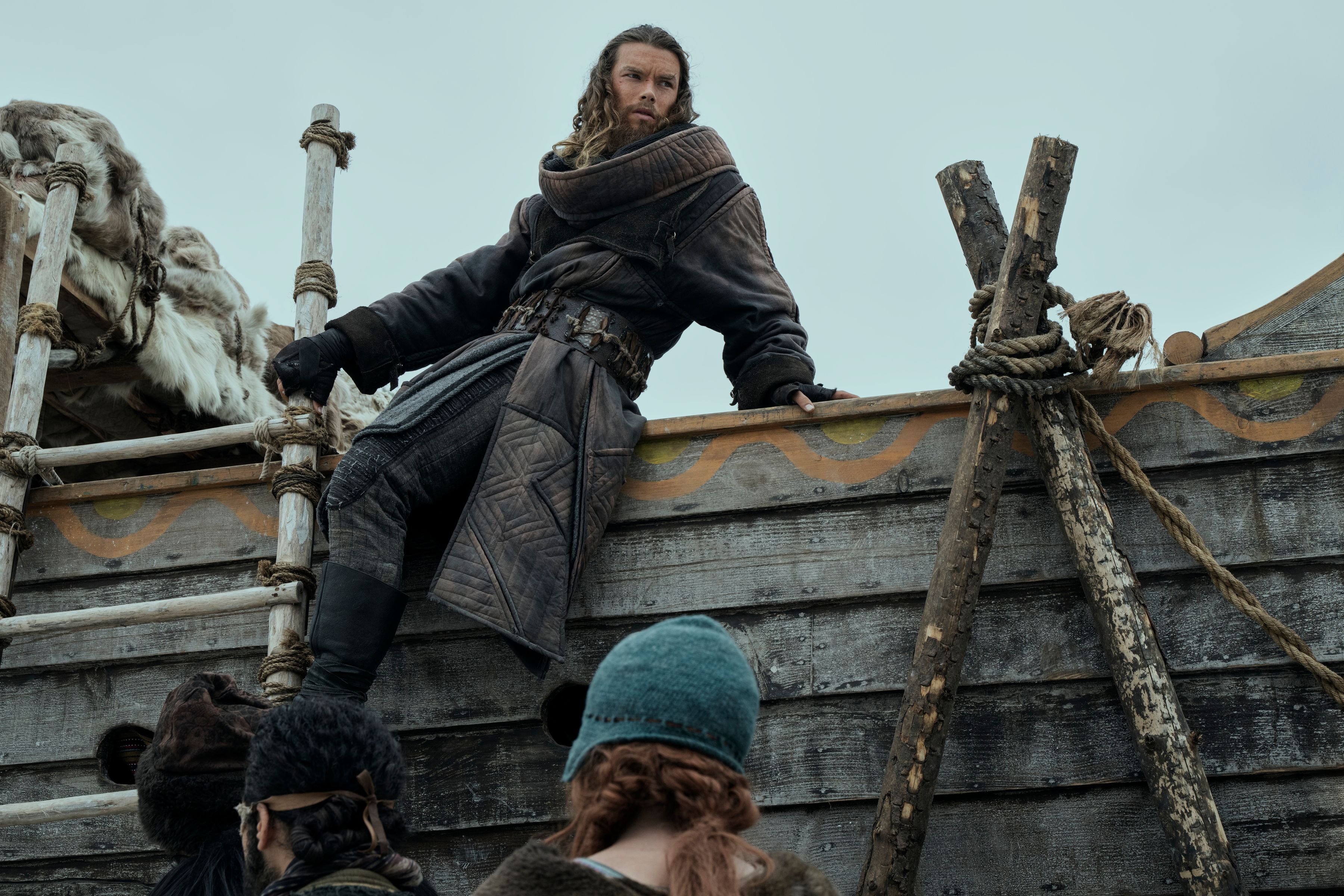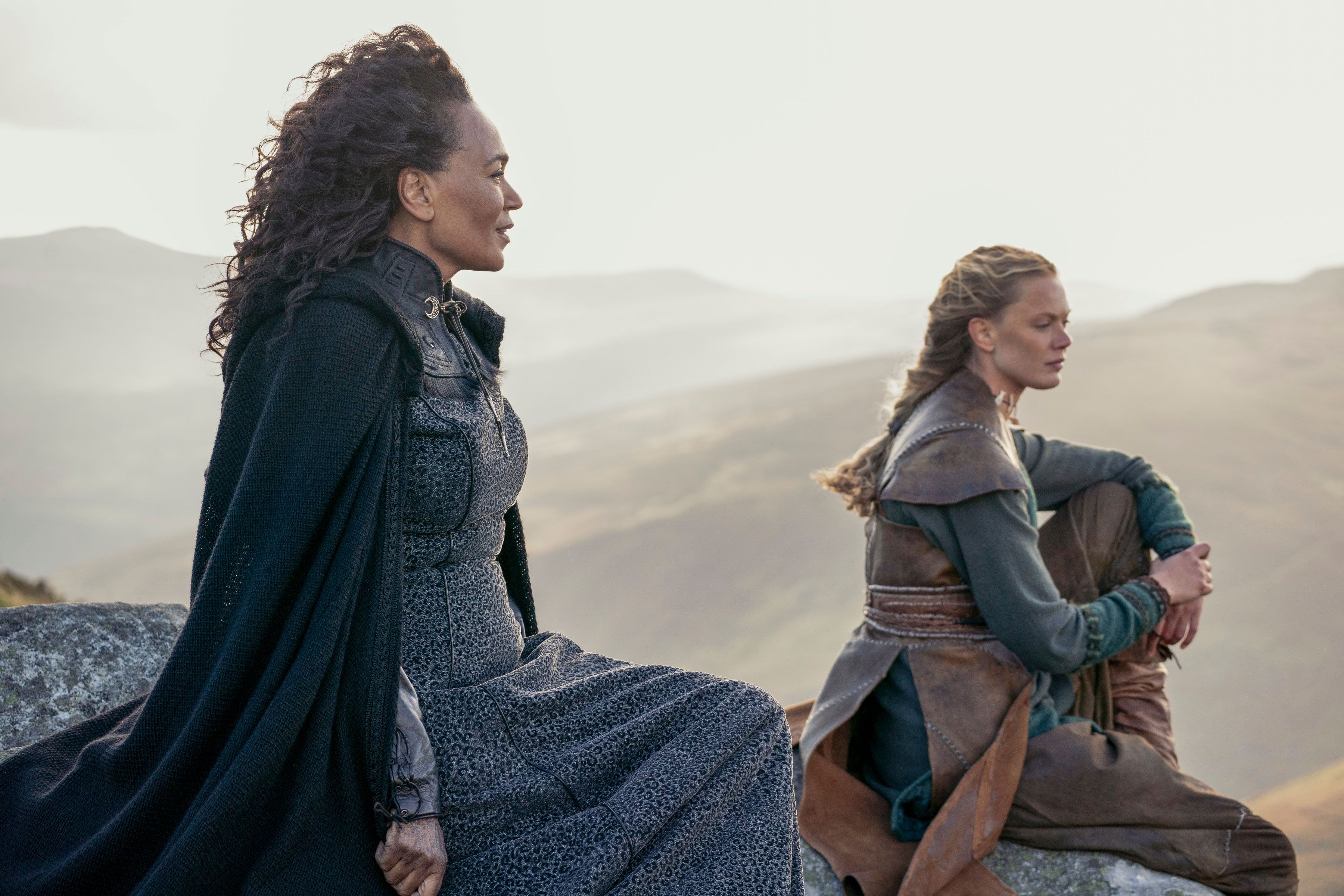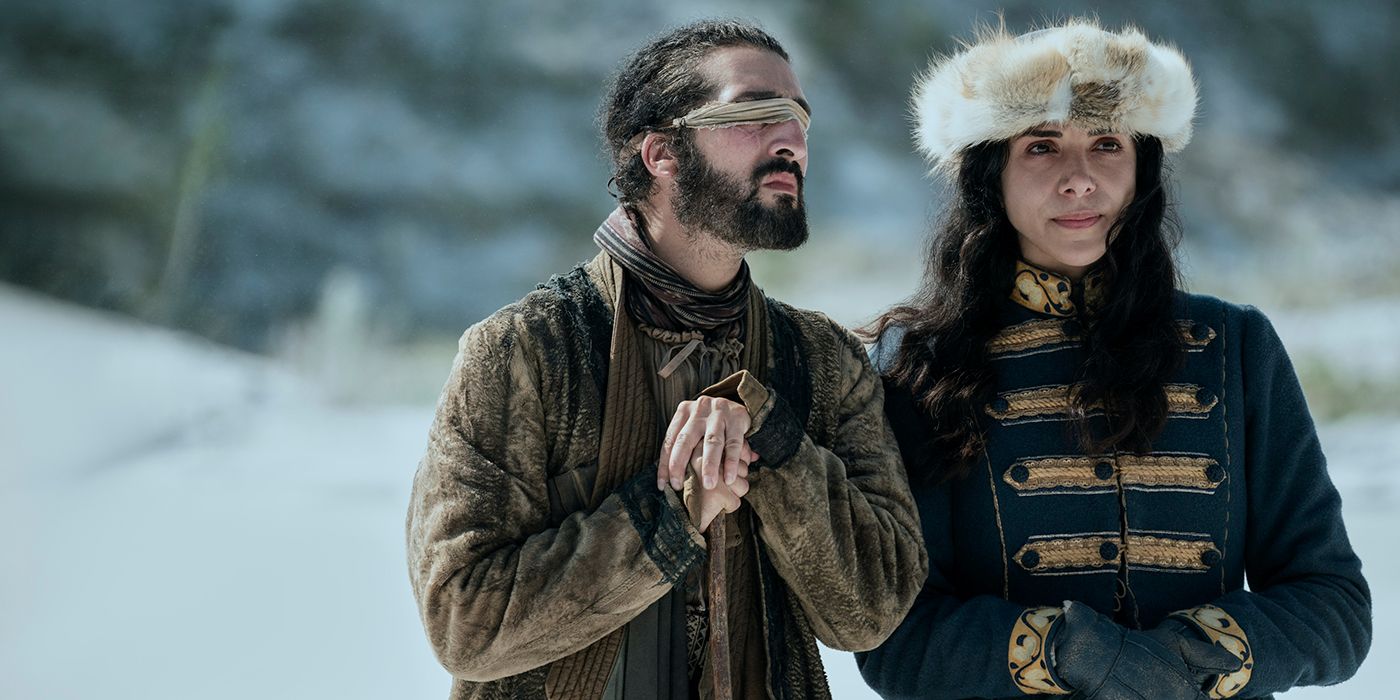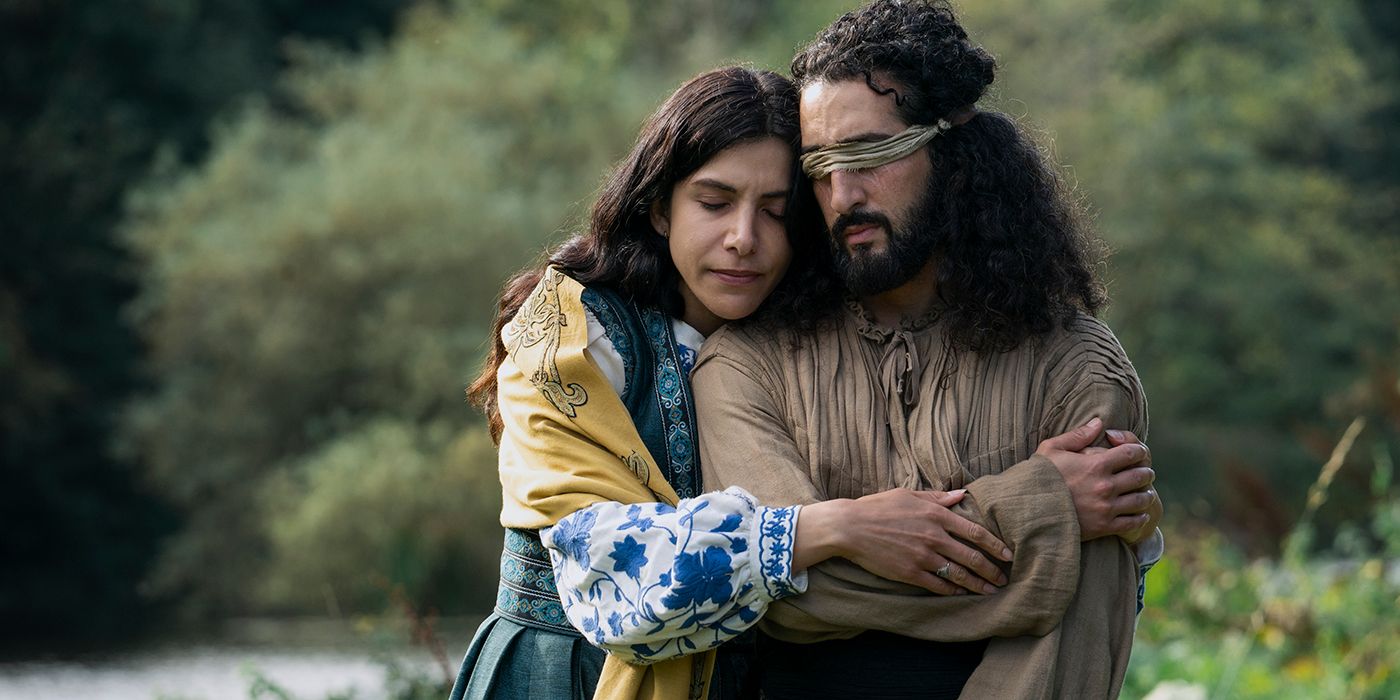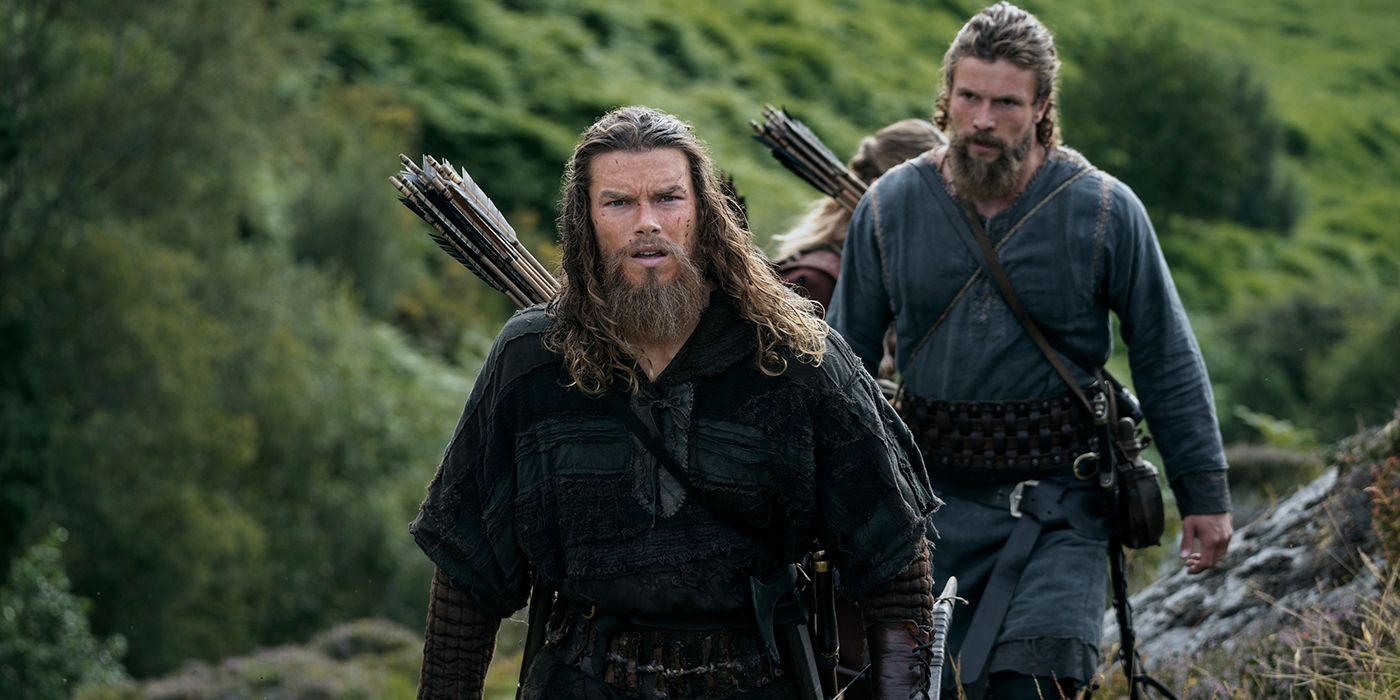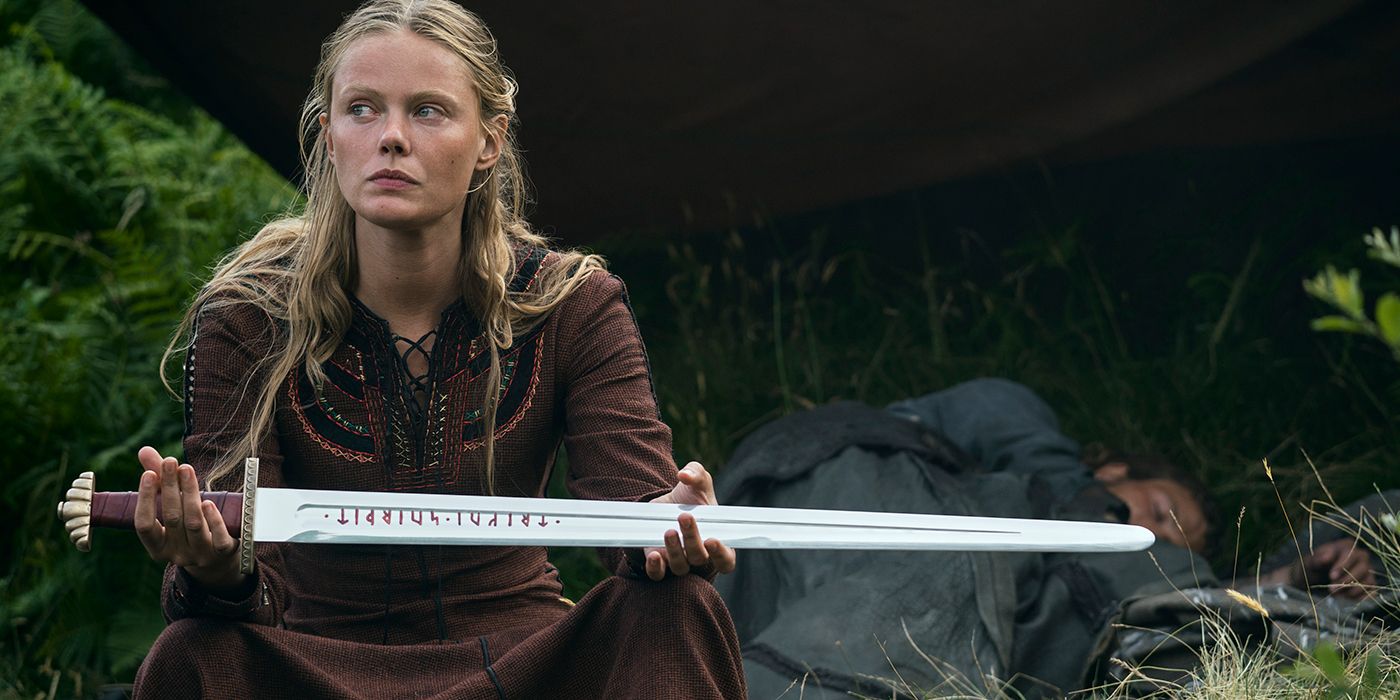Editor's Note: The following contains spoilers for Season 2 of Vikings: Valhalla.Vikings: Valhalla Season 2 is now available to stream on Netflix. Creator Jeb Stuart never hid away from the fact that, though this show requires a huge amount of research (with the help of Vikings history specialists working on the show), it was also his job, as a storyteller, to fill in the gaps, to mix up the dates and the characters' relationships in order to deliver a comprehensible and entertaining story to the audience. Now that we can learn what happens to Freydís Eiríksdóttir (Frida Gustavsson), Leif Erikson (Sam Corlett) and Harald Sigurdsson (Leo Suter) after the terrible battle of Kattegat at the end of Season 1, we thought we would take a moment to find out if the London Bridge collapsed as shown in the first season, or if Leif and Harald's brotherhood was as strong in real life, or yet, was King Edmund as arrogant and inexperienced as portrayed in Vikings: Valhalla ?
The information you will find in this article can be found in Viking sagas (which means ”a thing that is said” in Old Norse), written by Icelanders during the 13th century, or are the result of archeologist and historians research.
Were Freydís, Leif, and Harald Real People?
Our three main protagonists of Vikings: Valhalla are based on historical characters. But the thing is, their historical counterparts never actually met. Well, Leif and Freydís did, because they were indeed siblings, but they didn't know Harald, as they didn’t even exist as the same time. In fact, Leif was already dead when Harald was just an infant.
Let’s start with our favorite badass Viking, Freydís Eiríksdóttir, whose narrative arc in the series changes quite a lot from the very little information we have about her. Yes, Freydís was a strong Viking warrior, and the sister of Leif Erickson, children of Erik the Red (who was the founder of the first European installment on Greenland). That much remains similar to the storyline used in the show. However, Freydís’ personality and achievements remain quite a mystery. She is an important character who appears in two Vinland sagas, with two, very distinctive stories recounting who she really was. The first saga (Erik the Red’s saga) depicts the young woman as the heroin: The warrior accompanies a group of Vikings to Vinland (now known as Newfoundland), where she saves her party when they are attacked by natives, by taking a sword who belonged to a Viking who had been killed. According to this saga, Freydís is the illegitimate daughter of Erik the Red.
In The Saga of the Greenlanders, however, it is a very different story, and a very different Freydís we are introduced to: This time, she accompanies her husband, his men and two brothers Vikings to Vinland. She dislikes the two brothers, and she thinks they are too impudent. Freydís then tells her husband that the two men abused her ask him to avenge her, or she will divorce him. The brothers and their men are killed, but not the women, who Freydís ends up killing herself, with an ax.
It's not too hard to guess which version the Freydís resembles the most the character of Vikings: Valhalla.
Leif Erikson was more of an explorer than a warrior. In fact, he is known to be the first European to set foot in North America, c.1000 CE. Remains of the Norse settlement founded by Leif were indeed found by archeologists in Newfoundland, confirming this story told in the Sagas. In the United States, Leif Erikson even has his own day on October 9.
In Vikings: Valhalla, Leif starts having doubts about his religion, paganism, when a little girl places a cross in his hands after a battle, which leads him to believe that this is what actually saved him. The young man does the same thing to Liv, his best friend and lover, when she in gravely injured on the battlefield. She survives, which reinforces Leif inclination towards Christianity. In real life, Leif arrived in Norway and swore allegiance to Olaf Tryggvason, King of Norway, who converted Leif to Christianity before asking him to spread the religion across Greenland, which he did (according to Erik the Red's saga, still).
Harald Sigurdsson is often referred to as the last true Viking King, and one of the most powerful berserkers, as we can see in certain battle scenes of Vikings: Valhalla. A berserker, like Harald, means "A warrior in bear skin"` in old Norse, although it also has been translated as "warrior who fights without armor." Harald is known to be a great, mighty warrior, taller than any other Viking. He was, like in the show, the half-brother of King Olaf II. However, they didn’t fight alongside and then against each other for too long, as in Valhalla. Harald was 15 when he and his brother fought against the Danes loyal to Canute (Bradley Freegard) in the battle of Stiklestad in 1030, which resulted in the death of Olaf. So Canute wasn’t exactly as close to Harald as he is in the show.
Before he was King of Norway, Prince Harald was also a traveler, who sailed to Kiev, Constantinople and Sicily. When he was finally crowned king, he had to share the throne with Olaf’s son, Magnus. It didn’t last long, as Magnus died quickly after and King Harald finally became the sole King of Norway.
The True Story Behind Canute, Emma of Normandy and Edmund Ironside
As we established before, Canute was a great warrior. However, he didn’t fight alongside Harald when the retaliations to St. Brice’s Day Massacre were decided (we'll get back to this event later in the article). Canute wasn’t the first Viking King of England, as said in the show, but his father, Sweyn Forkbeard, was (during one winter). When the latter died, Canute fought against England, and in particular against Prince Edmund, who then became king, after the death of his father, Æthelred II. So far, the series has kept this storyline. However, Edmund wasn’t a ”boy king” as Canute likes to call him in Vikings: Valhalla. The two men were actually the same age when they fought (roughly 26 years old). Edmund was a skilled warrior, but his efforts remained in vain during the battle of Assandun in 1016. Indeed, just like in the show, Eadric Sterna, who was supposed to come and fight with Edmund, abandoned the conflict, which gave Canute and his men the opportunity to break through English defenses, and win the fight.
Edmund later died under mysterious circumstances. Some say he was poisoned, others claim that an arrow pierced his lungs while he was on the privy.
Canute then married Queen Emma of Normandy, who was the widow of Æthelred II. She was a great strategist and politician, and she married King Canute, who did succeed to rule over a North Sea Empire, as he always wanted to.
Did the London Bridge Really Fall Down?
In Valhalla, the first episode introduces St. Brice’s Day Massacre, an event that occurred when King Æthelred (also called Æthelred the Unready or Ill-advised) ordered his troops to murder a large part of the population of the danelaw regions, in which lived Gunhilde, the sister of Sweyn Forkbeard. In the show, it is said that the attack was ordered to ”cleanse” England from the Danes. As of now, many historians agree to say that this was most likely a response to repetitive Danish raids, murders and invasions in England.
Another good use of "remains to be proved” history is the battle of The London Bridge in Episode 4. For dramatic purposes, the creators of Valhalla set the battle between Canute and Edmund on The London Bridge. Did it really happen there? There aren’t enough details on this battle to prove that this is completely fabricated. Now, everyone knows the nursery rhyme ”London Bridge is Falling Down." Different versions of this song exist, and one of them, Heimskringla, supports the idea that the bridge might have, indeed, fallen down during a battle involving Olaf. The translation of the lyrics is the following:
“London Bridge is broken down. —
Gold is won, and bright renown.
Shields resounding,
War-horns sounding,
Hild is shouting in the din!
Arrows singing,
Mail-coats ringing —
Odin makes our Olaf win!”“
Were There Really Women Viking Warriors?
In Vikings: Valhalla and in Kattegat, we find a lot of women Vikings, warriors and women in a position of power, and history did prove it right. Justin Pollard, historian and screenwriter who worked on the show, stated: “We have evidence now that there were women warriors. Viking society is quite egalitarian — not like Christian society at the time. Most things within the community and country, you get to vote on, and it’s not as though you get one king who tells you what to do. Women have rights, property, and can divorce their husbands. If you want to make something of yourself, you can. You can join a war band and go out as a Viking, but if you screw up, your team will take over or abandon you. It’s quite entrepreneurial.”
The character of Jarl Haakon (Caroline Henderson) didn’t exist; however she is heavily based on a real Viking man called Haakon Sigurdsson. The first season introduces Black actress Caroline Henderson as Jark Haakon, and some people online have been eager to criticize this choice of casting, they were proven completely wrong by historians who actually worked on Vikings: Valhalla. Tríona Sørensen, Ph.D., is a curator of the Viking Ship Museum in Roskilde, Denmark and she stated, “You see this clearly in the archaeological record here in Scandinavia — in silver coins from Arabic lands, precious metalwork from Ireland and Britain, silks from the East — all items that made their way to Scandinavia via maritime trade networks."
There are indeed, many DNA and historical evidence that prove that there were black Vikings in history, which Vikings: Valhalla does show perfectly.
Is Mariam Based on a Real Life Character?
Season 2 of Vikings: Valhalla brought a lot of new characters and new places. One of the most interesting characters introduced this season is Mariam (played by Hayat Kamille), who is based on a real historical character. In the show, Mariam is a scholar in the field of science and literature. She teaches Leif everything she knows, and he ends up falling in love with her. Mariam is inspired by the real Mariam Al-Ijliya (or Mariam al-Astrulabi), born in Aleppo, Syria. Mariam Al-Ijliya developed the ancient tool that was the astrolabe during the 10th Century. Jeb Stuart said that Mariam Al-Ijliya used everything she knew about mathematics to apply it to already existing tools, in order to chart the path of the stars. The astrolabe was meant to tell your exact position or the time, using the astral bodies. She also developed navigation and timekeeping techniques, which you can clearly see in Season 2 of Vikings: Valhalla.
At the time, Sayf Al Dawla, the founder of the Emirate of Aleppo, was very impressed by Mariam’s knowledge, and he employed her in the court of Aleppo. While Leif and Mariam didn’t meet in real life (let alone fell in love), her presence in the show is absolutely essential as she teaches Leif how to read, how to use mathematics, and she opens him up to a world of possibilities. Her skills save the team more than once, and it is fair to say that without Mariam, her friends would have never been able to lift the boat, and put it back on the water just in time before the attack of the Pechenegs.
Who Were the Pechenegs?
Speaking of Pechenegs, the people our team of travelers are so afraid to meet on their way to Constantinople, were indeed a semi nomadic people from Central Asia, who spoke the now extinct Pecheneg language. According to the historical timeline of the Pechenegs, and at the time Vikings: Valhalla takes place, the Pechenegs had settled in what we now know as Ukraine, Moldova, Romania and Bulgaria. The region was very uncertain and unsafe as we can see in the show, because the Pechenegs were famous for sending raids to their different neighbors or travelers.
In the series, Kurya, a blind Pecheneg, becomes a friend of Harald, Leif, and the rest of the group. He is the brother of the Khan, and he even sacrifices himself to save his friends. In real life, Kurya was THE Khan. He is believed to have been an ally to Svyatoslav I of Kiev but according to The Tale of Bygone Years, Kurya later betrayed and killed him. It even says that Kurya used Svyatoslav’s skull as a goblet. If you remember correctly, in Season 2, Episode 7, Harald is tortured by the Pechenegs inside a tent. There, we can see multiple skulls of Varangians, which was the name given to Scandinavian warriors operating around Constantinople for the Byzantine army. Harald tells them that there is not one single Viking skull in their collection, because if the Pechenegs had fought a Viking, the said Viking ‘’would be drinking from (their) skull(s)’’. This quote is a direct reference to the real life Kurya, and the death of Svyatoslav I of Kiev.
When Harald and Leif arrive in Novgorod in the hope to find some help, Harald meets with Yaroslav (Marcin Dorociński), his uncle. In real life, Yaroslav was indeed the Grand Prince of Kyiv from 1019 to 1054 and he was also the Prince of Novgorod. However, he wasn’t Harald’s uncle, but more of a mentor and distant relative. After Olaf’s death on the battlefield in 1030, Harald joined Yaroslav the Wise in Kyiv, when he was about 15 years old. It is often said that this is when Harald fell in love with Elisiv of Kyiv, daughter of Yaroslav.
In 1035, Harald traveled to Constantinople with his men, and he offered his services to the emperor by joining the Varangian Guard (which leads us to believe that he might, indeed, become a Varangian in Season 3). After having acquired a lot of richness, Harald decided to return to Kyiv in 1043 or 1044, however, Empress Zoë accused Harald of the theft of imperial treasure. It is sometimes believed that she accused him to keep him in Constantinople after she fell in love with him (another version of this story is that Harald fell in love with her niece, Maria). Back in Kyiv, Harald finally married Elisiv of Kiev, and she later became Queen of Norway when Harald finally accessed the throne.
Is Jómsborg a Mythical Place?
In this second season of Vikings: Valhalla, Freydis is separated from her brother Leif and her lover, Harald, when she understands that they have different destinies to follow. She arrives in Jómsborg, which is meant to be the new Uppsala (destroyed in season 1). So did Jómsborg really exist? The short answer is yes and no. Jómsborg is often referred to as a semi-legendary fortress, situated at the south of the Baltic Sea, even if its precise location still isn’t certain: some historians think Jómsborg is pure legend, while some others are convinced that the very few writings they found about Jómsborg, are based on a real location. They are convinced that it was situated on a hill near a now Polish town called Wolin.
Jómsborg is described as a fortress with a harbor, an iron gate and a high stone tower, just like in the show. Its inhabitants were the Jomsvikings, who were indeed, believers of the Old Gods and of the Old Norse faith. According to the Saga Heimskringla, Magnus, Olaf’s illegitimate child, destroyed Jómsborg, after they refused to acknowledge him as new king. As mentioned before, Jeb Stuart loves to use the grey parts of Vikings history for his storytelling. Based on what we know from these characters, and of what we know from the sagas, it will be very interesting to see how Stuart keeps on telling the lives of our three main protagonists.
Seasons 1 and 2 of Vikings: Valhalla are now streaming on Netflix.

